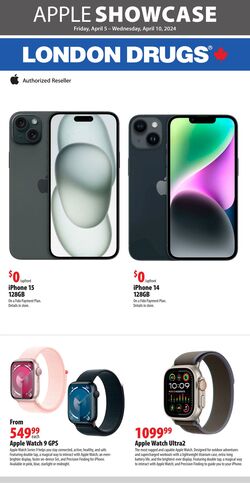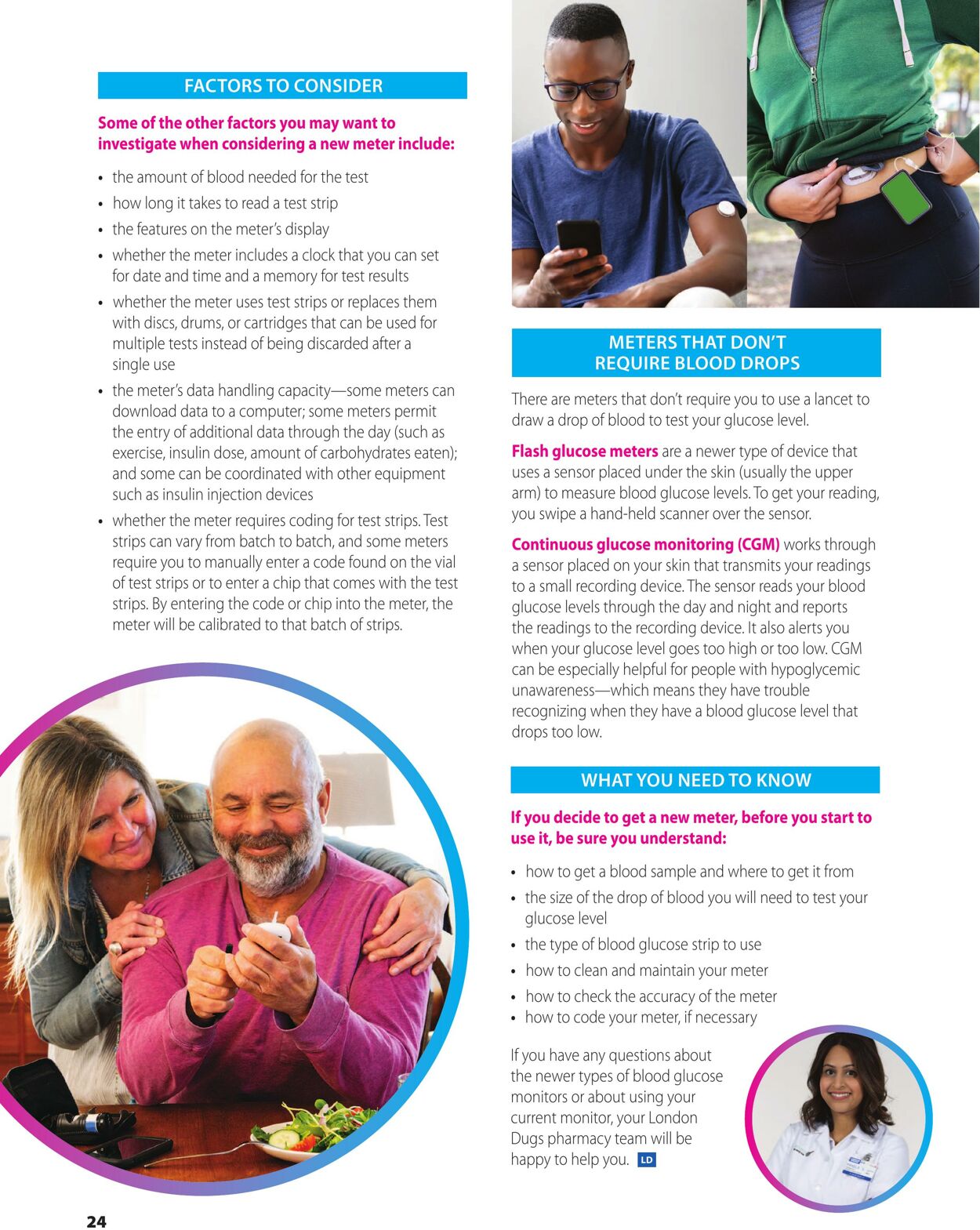













Les produits de cette circulaire
FACTORS TO CONSIDE the amount of blood needed for the test how long it takes to read a test strip the features on the meter's display whether the meter includes a clock that you can set for date and time and à memory for test results whether the meter uses test strips or replaces them with discs, drums, or cartridges that can be used for multiple tests instead of being discarded after a single use the meter's data handling capacity—some meters can download data to a computer; some meters permit the entry of additional data through the day (such as exercise, insulin dose, amount of carbohydrates eaten); and some can be coordinated with other equipment such as insulin injection devices whether the meter requires coding for test strips. Test Strips can vary from batch to batch, and some meters require you to manually enter a code found on the vial of test strips or to enter a chip that comes with the test strips. By entering the code or chip into the meter, the meter will be calibrated to that batch of strips. 24 METERS THAT DON'T REQUIRE BLOOD DROPS There are meters that don't require you to use a lancet to draw à drop of blood to test your glucose level. F are à newer type of device that uses a sensor placed under the skin (usually the upper arm) to measure blood glucose levels. To get your reading, you swipe a hand-held scanner over the sensor. ) works through a sensor placed on your skin that transmits your readings to a small recording device. The sensor reads your blood glucose levels through the day and night and reports the readings to the recording device. It also alerts you when your glucose level goes too high or too low. CGM can be especially helpful for people with hypoglycemic unawareness—which means they have trouble recognizing when they have a blood glucose level that drops too low. WHAT YOU NEED TO KNOW + _how to get a blood sample and where to get it from +_the size of the drop of blood you will need to test your glucose level «_the type of blood glucose strip to use + _how to clean and maintain your meter + _how to check the accuracy of the meter +_how to code your meter, if necessary If you have any questions about the newer types of blood glucose monitors or about using your current monitor, your London Dugs pharmacy team will be happy to help you. FE
| Nom | Détails |
|---|